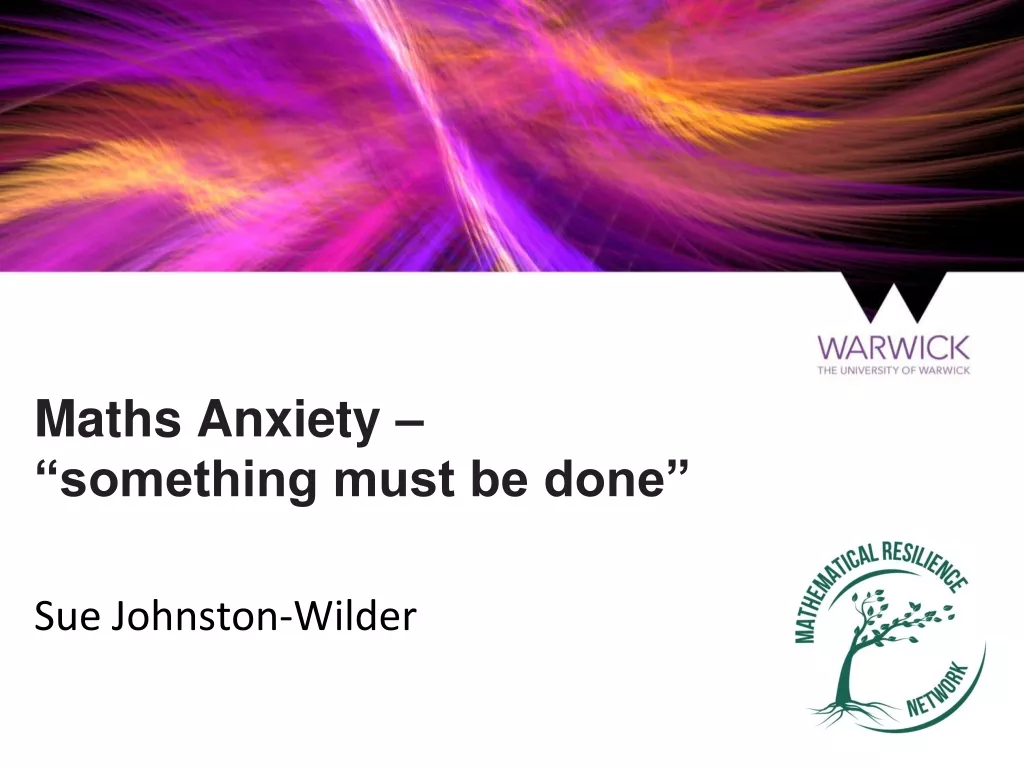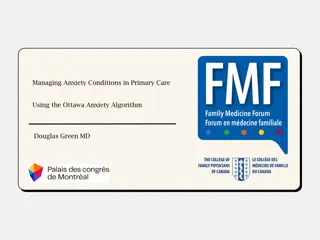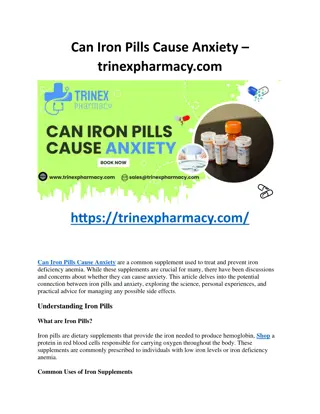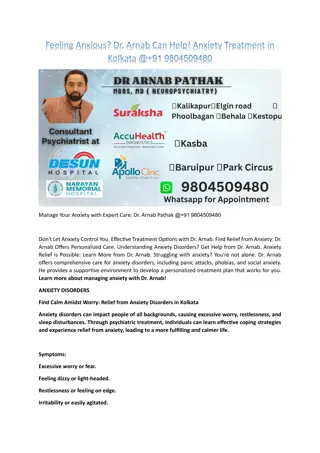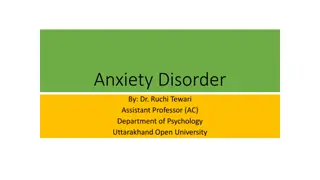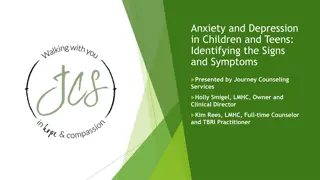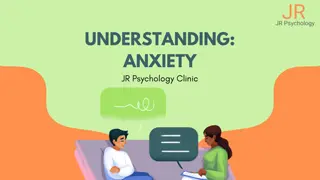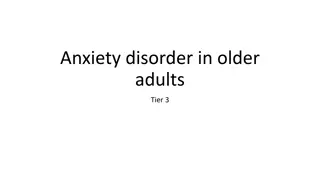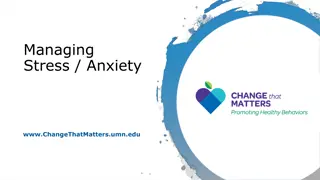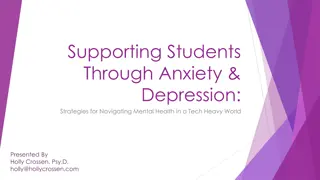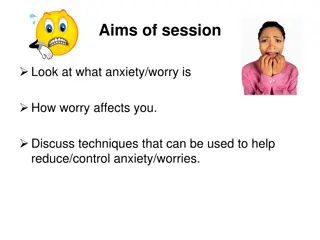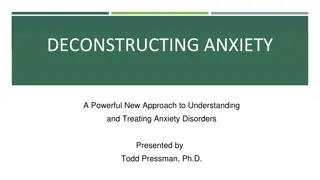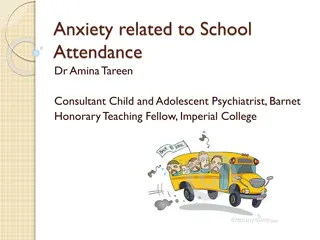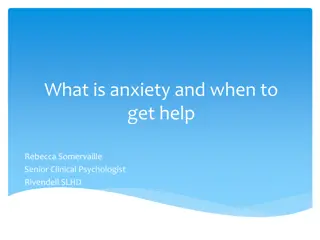
Integrated Approach to Treating Anxiety: A Collaborative Care Model
Explore the collaborative approach to treating anxiety, understanding the role of case management, provider support, and considerations when interacting with clients. Delve into a detailed treatment plan and measuring outcomes for success in anxiety management.
Download Presentation

Please find below an Image/Link to download the presentation.
The content on the website is provided AS IS for your information and personal use only. It may not be sold, licensed, or shared on other websites without obtaining consent from the author. If you encounter any issues during the download, it is possible that the publisher has removed the file from their server.
You are allowed to download the files provided on this website for personal or commercial use, subject to the condition that they are used lawfully. All files are the property of their respective owners.
The content on the website is provided AS IS for your information and personal use only. It may not be sold, licensed, or shared on other websites without obtaining consent from the author.
E N D
Presentation Transcript
Treating Anxiety From an Integrated Approach A Collaborative Approach to Care April 6, 2019 * Tex-CHIP Training Series
Understanding Provider Role in Treating Anxiety Supportive role Education for client and support system Diagnosis education Enabling coping skills vs positive coping skills Real-time applications of the skills learned in therapy Symptoms tracking and reporting Encouraging self-reporting Effective documentation from case manager to team
Considerations when Interacting with Clients Similarities across Anxiety Disorder diagnoses Fear, Anxiety, &/or Avoidance Current coping skills and patterns of learned behaviors Separating appropriate coping skills may be difficult depending on how the skills effect anxiety symptoms Case Manager as a potential primary enabler? Potential difficulties of comorbidity with other diagnoses Maintaining compassionate curiosity with difficult symptoms and potential for slow/selective progress
Our Treatment Plan Healthcare Domain: Behavioral Health Provider: Case Manager Goals: Interventions: Objective: Decrease in symptoms as indicated by client report of: (a) Reduction always on edge feeling (b) Reduction in exposed and vulnerable feelings (c) Increase outings (d) Improve reports of worry a) Resume daytime activities a) Deep breathing techniques b) Purchase food/groceries in person at a brick & mortar location b) Desensitization of anxiety symptoms c) Normalization of anxiety symptoms across scenarios c) Resume enjoyable activities outside her home
Measuring Outcomes/Success Increased positive/desired behaviors Engaging in the (formerly) anxiety provoking situation without using current enabling coping skills Decreased negative/unwanted behaviors Engaging in the (formerly) anxiety provoking situation without or with decreased anxiety symptoms
Communication Needed from Counselors Specifics of the needs as related to the presenting symptomology Identification of successes and challenges reported in session(s) Concrete identification of skills to build or strengths to utilize in case management planning Any positive or negative influence from primary support group or natural supports Risk factors, or triggers for increased risk Include related safety plan and emergency procedures

